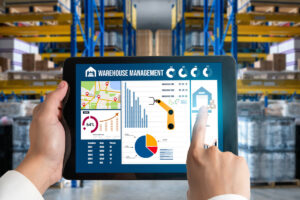The Central Problem and Challenges of Traditional Procurement
In many companies, procurement still operates under traditional models where manual tasks and fragmented processes prevail. This situation generates several challenges.
1. Slow and bureaucratic processes
McKinsey (2023) notes that “procurement teams spend up to 40% of their time on transactional tasks that could be automated”. These processes include:
-
Manual review of purchase orders.
-
Budget validations.
-
Invoice follow-ups.
-
Repetitive communication with suppliers.
The result is a significant loss of agility, affecting responsiveness in dynamic markets.
2. High rate of human errors
Manual data entry in procurement systems creates inconsistencies that can escalate into multimillion-dollar costs. Deloitte (2023) reports that “37% of critical procurement errors come from manual entries in purchase orders and invoicing”.
3. Lack of traceability and control
Non-automated processes make auditing and supplier monitoring more difficult, exposing organizations to risks of fraud, regulatory non-compliance, and hidden costs.
4. Difficulties in scaling
For growing companies, reliance on manual processes creates bottlenecks that limit their ability to handle larger transaction volumes.
Procurement Automation Strategies and Solutions
Procurement automation does not mean replacing human teams, but equipping them with tools to focus on strategy while leaving repetitive, error-prone tasks to technology.
1. Automation of the purchase order cycle
Automation systems enable:
-
Creation of orders from pre-approved templates.
-
Automatic budget validations.
-
Purchase orders approved in hours instead of days.
Practical case: A retail company in Bogotá reduced the average approval time for purchase orders from 8 days to 36 hours by implementing automated workflows integrated with its ERP.
2. Integration with ERP systems and digital platforms
Automation solutions integrated with ERP systems (SAP, Oracle, Microsoft Dynamics) enable complete traceability:
-
Consolidated real-time information.
-
Reduction of duplicated tasks.
-
Full visibility of spend by category and supplier.
Gartner (2023) predicts that “by 2026, over 60% of global organizations will have automated at least 80% of their procurement processes”.
3. Robotic Process Automation (RPA) applied to procurement
RPA is used to replicate repetitive tasks previously performed by procurement analysts:
-
Extracting data from invoices.
-
Validating prices against contracts.
-
Automatically notifying suppliers about payments and deliveries.
Deloitte (2024) reports that “companies implementing RPA in procurement achieved up to 25% savings in administrative costs and a 30% improvement in data accuracy”.
4. Automated supplier evaluation
Automation also impacts supplier management:
-
Automatic performance evaluation based on KPIs.
-
Early alerts for non-compliance.
-
Integration with risk platforms to validate supplier backgrounds.
Example: A manufacturing company in Medellín implemented an automated system that cross-referenced delivery, quality, and regulatory compliance data. This allowed them to detect underperforming suppliers early and renegotiate contracts under more favorable terms.
5. Artificial intelligence applied to procurement
Beyond basic automation, artificial intelligence brings predictive analysis capabilities:
-
Identification of anomalous spending patterns.
-
Recommendations for alternative suppliers.
-
Cost predictions based on market trends.
McKinsey (2023) affirms that “companies combining AI and automation in procurement achieve an additional 20% efficiency compared to those implementing only basic digital processes”.
Tangible Impact and Benefits of Automation
Companies that have invested in procurement automation have documented significant improvements in efficiency, control, and profitability.
Reduction of operating costs
-
15% to 25% savings in administrative processes.
-
Less reliance on manual tasks that generate hidden costs.
Improved agility and speed
-
Approval time for purchase orders reduced by 50% or more.
-
Faster response capacity to changes in demand.
Fewer errors
-
Up to 70% decrease in errors related to invoicing and purchase order data.
-
Greater accuracy in consolidated reporting.
Transparency and compliance
-
Faster, more reliable audits.
-
Real-time visibility of total spend.
Human talent reallocation
-
Procurement teams can focus on strategic negotiations, supplier relationship management, and innovation.
Colombian case: A healthcare company in Medellín digitized and automated its medical supply procurement. The result was an 18% annual saving in administrative costs, a reduction in approval times from 10 days to 48 hours, and significant improvement in the availability of critical supplies.
Strategic Conclusion
Procurement automation is no longer optional but a necessary condition to compete in demanding and dynamic markets. Organizations clinging to manual processes face delays, errors, and missed opportunities.
In contrast, those adopting automation solutions are achieving:
-
Sustainable cost savings.
-
Faster, more reliable processes.
-
Greater resilience to market changes.
Center Group supports companies in implementing automation technologies that transform procurement into a driver of productivity and strategic value. If you want to explore how to take your procurement management to the next level in 2025, contact us and discover how we can help you reduce errors and increase efficiency.





